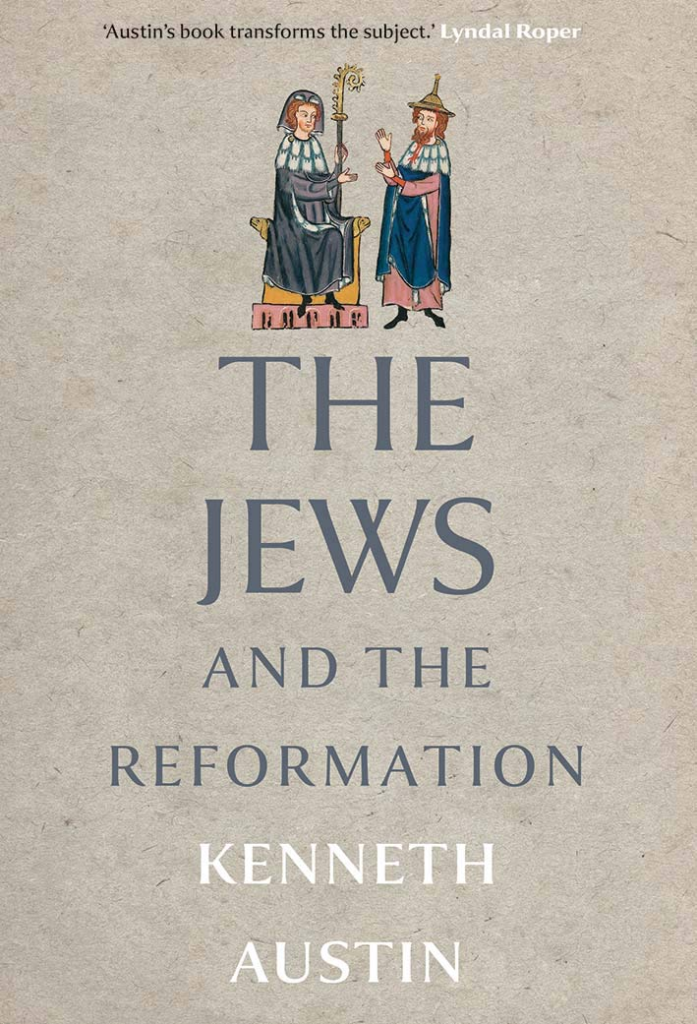
With this book, the author (Senior Lecturer in Early Modern History at the University of Bristol) synthesizes scholarly research on the history of European Jewry from the late fifteenth to the late seventeenth century. It results in a concise but very informative overview of the situation of Jews in the Christian West of the early Modern era. The seismic religious conflict inside the Christian Church, the Protestant Reformation, with its strong reference to the Bible (of which the first part de facto is the holy Book of the Jews) triggered a reformulation/reconsideration of the view on the Jews (both their religion and their presence). By the way, the author uses the term ‘Reformation’ as a generic term, not restricted to the Protestant Reformation(s), but referring to an amalgam of religious reforms, theological changes, and reformulations of the relation between ‘church and state’, that took place in the period at stake. This generic use is common to the Anglo-Saxon world but contested on the continent (mainly in Germany).
In telling the story of how European societies dealt with the Jews in their midst, the author moves beyond stereotypes about the relation between Jews and Christians (both theological and personal). The relevant events are treated with academic attention, perusing most recent scholarship in the field. After a timeline and an introduction (p. ix-xxv), follow eight chapters (p. 1-204), of which the titles and subtitles are telling. So instead of a summary, I simply quote them: A Contested Inheritance: Judaeo-Christian Relations on the Eve of the Reformation (1). A New Dawn? Re-evaluating the Jews at the Start of the Reformation Era (2). Dashed Hopes: Jews and the Early Reformation (3). People of the Book: The Reformed Church and Judaism (4). A Tridentine Response: The Catholic Church and the Jews (5). Fault Lines: Jews in a Confessionally Divided Christendom (6). Caught in the Crossfire: Jews and Christians in the Era of the Thirty Years War (7). Heightened Expectations: Messianism, Millenarianism and the Hope of Israel (8).
The book itself being summative, a summary is impossible. Some elements that caught my attention: In chapter 3 the city-reformation of Strasbourg is treated (Capito, Bucer). There true interest in Jewish scholarship (including rabbinica) went hand in hand with a very strict control on the presence of real Jews inside the city: a kind of ghetto without walls. Dealing with Geneva (Calvin) in chapter 4 Austin grasps the opportunity to introduce his hero, Giovanni Emmanuele Tremellio (1510), a baptised Jew, who then became the celebrated Hebrew Scholar and Bible translator: Emmanuel Tremellius (1510-1580). Austin dedicated his Ph.D. Research to him. Also interesting to read is the relative relevance of Jewish monotheism for Miguel Servet’s polemic against the doctrine of the Trinity. In chapters 3, 4, and 6 it becomes clear that the insistence on the ‘sola scriptura’ principle (source and yardstick of the Christian faith, including the Old Testament) in the long run also made a difference in the way ordinary people looked on the Jews and their traditions. Via Bible translations, and historical exegesis (sermons, lessons, and catechisms) the new views of the elite seeped through to the masses. The openness to Hebrew/Jewish Studies remained a characteristic in the Protestant Reformation, but was almost always accompanied by an act of usurping the Old Testament, often claiming the title of ‘Chosen people’ for the own Church (with proto-nationalist connotations). In the internal confessional divide between Lutherans and Reformed, the accusation of Judaizing became stock polemics on the part of the Lutherans against the Reformed (based on differing views on the way Christ is represented in the Old Testament). In the Tridentine Reformation (ch. 5) conversion of Jews became (remained) predominant. But whatever the new positions and attitudes towards the Jews might have become, all christian groups and countries remained united in their rejection of the Jewish religion (theological anti-Judaism), and Jewish people (proto anti-Semitism). The author, however, also makes clear that religious and secular motives (often economic or social) were so intertwined that they cannot really be disentangled. In this context the occasional outbursts of violence against Jewish communities are dealt with (ch. 7). The book ends with a survey of the messianic movement surrounding Sabbatai Zevi and the first tendencies inside Jewish communities in Europe to move to Palestine (ch. 8). The author suggests links between Jewish messianism and Christian millenarianism, both using kabbalistic calculations with regard to the coming of the Messiah. Christian millenarianism is often accompanied by the expectation of a Jewish conversion movement at the end of times (based on Romans 11,26). Judaizing practices in politics took the form of a sanctification of the Sabbath (on Saturday), or of a policy of tolerance among the Puritans (Cromwell) to include Jews while excluding Catholics.
After the conclusion (p. 205-214), follow the endnotes (40 pages), a relevant bibliography (30 pages), and an index (10 pages), all printed in small type. This succinct but scholarly overview deservers to become a handbook for students interested in the complex and intricate relation between Jews and Christians in early Modern Europe.
Dick Wursten
Kenneth Austin, The Jews and the Reformation. New Haven: Yale University Press, 2020. xxv, 295 p. ISBN 978-0-300-18269-1